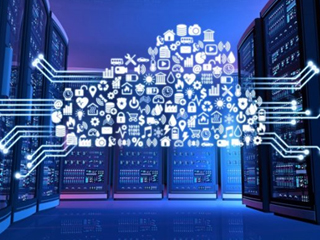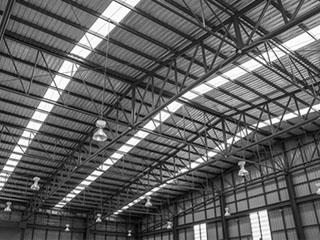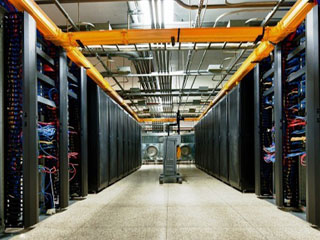Data centers have immense importance in today’s world. Through these facilities all internet data and traffic is coursed. In our digital revolution all industries are shifting to greater reliance on IT services. Thus, it is imperative for data centers to remain online, known as uptime. There are however threats to the data center operations that must be managed in order to maintain uptime. Securing and preparing for data center disasters is essential.
Data centers contain millions of dollars worth of equipment. Aside from functionality, safety is the next biggest concern. Organizations want to keep their facilities optimal and safe from disasters. Hence, they go to great lengths to secure their facilities and ensure safety at all times.
But, disasters cannot always be avoided. Data centers are prone to disasters if they are unprepared for them. And when disasters happen, they cause disturbances to business continuity and come with a significant financial cost. As we know, prevention is better than cure. The best way to prevent downtime from disasters is to be prepared, regardless of how unlikely it is to happen.
In this article, we shed light on data center disasters that can damage your facility. We give you tips on how to prevent disasters and how risks can be mitigated.
What Causes Data Center Disasters
Many factors can cause data center disasters. This includes natural disasters, hardware failure, and software issues. As well as power outages and user errors.

Photo Credit: American Museum of Natural History
- Natural Disasters
Earthquakes, floods, and fires are events which are beyond your control. These natural disasters can only be planned for. You need to consider the data center location as it has a significant contribution to the natural disasters a facility is exposed to. It is important to have an offsite backup system and minimum N+1 redundancy. As we have seen in the COVID-19 pandemic, remote work setup is an important backup system. Operators must ensure that crisis management and communication platforms are available without having to work on-site.
-
Hardware Failure
This is the most common issue that leads to IT disaster. Data center equipment is sensitive to temperature, humidity, water damage and requires regular maintenance. Their lifespan reduces with use, especially if operated close to their maximum capacity and operating temperatures. Hardware failures are bound to happen at some point, especially if you are operating aging equipment, they may need more care to prevent downtime.
-
Software Issues
Having the best software in your facility does not guarantee safety from disasters. If your software is not properly updated or patched, hackers can always attack. It is vital to keep your facility’s data secured at all times. Include regular updates and patches in your maintenance routine to prevent software issues. AKCP performs monthly security scans on their software to ensure it’s products are safe from zero day vulnerabilities.
-
Power Outages
As data centers rely on electricity, power outages disrupt IT operations. Unexpected shutdown can also damage equipment and cause data loss. A power outage is one of the greatest threats to the datacenter, hence, you need to have a reliable backup system in your facility.
-
User Error
Accidentally downloading a virus, wrong keystroke, and mishandled configuration. These are some of the common user errors that lead to disasters. It is also essential that operators and employees are professionally equipped in their roles. Make sure that your disaster recovery plan considers these factors.
Few More Data Center Disasters To Watch Out For
Identifying potential disasters is the first step in creating a disaster recovery plan. Here are a few more data center disasters to watch out for.
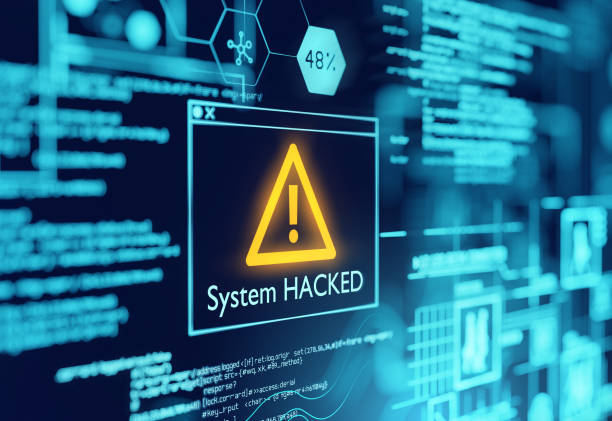
Photo Credit: media.istockphoto.com
-
Cyber-Attack
It is not surprising that data centers are prone to cyber-attacks, given that they house sensitive information and massive amounts of data. Hackers particularly go for the information they can use to benefit financially from. Hence, you must ensure that data center software has the strongest barriers against cyber-attacks.
-
Earthquake
This disaster frequently strikes with little warning. Unprotected equipment can be severely damaged by even minor earthquakes. Nowadays, there are structural designs that are more “earthquake proof.” Consider implementing an earthquake-proof design in your data center infrastructure. There are even specially design racks for use in areas prone to seismic activity.
-
Fire
This is one of the most prevalent data center disasters. Operators must be prepared for a wildfire outside the facility, as well as fires that start inside the data center. Always check the equipment and electrical wires that may cause an accidental fire.
-
Flood

Photo Credit: twistedsifter.com
This can be triggered by heavy rain, melting snow, and damaged dams. Broken pipes within the data center are another source of flooding to be aware of. Ensure that your water-based equipment, like cooling systems, is properly maintained.
-
Tornado
Strong winds may knock out electricity, destroy data circuits, and blow trees down onto a structure, among other things. Make sure that your data center has a reliable redundant system. Ensure a reliable backup system as well to mitigate risks.
Mitigate Risks Of Data Center Disasters
Certain factors need constant monitoring in data centers. Not only to maintain functionality in the facility but to keep safety as well.
-
Power
A few minutes of a power outage can lead to hours of downtime and network interruption. In 2013, DreamHost experienced this problem. A brief power outage in their facility affected 350,000 customers. Including 1.2 million apps and websites. The facility’s UPS system and power backups ultimately failed. Until the UPS operated, they had to run on generators. This demonstrates why reliable backup systems are essential in data centers. Power outages are inevitable. The best preparation one can do is to track power systems to flag risks early on, as well as ensuring sufficient generator capacity is provided and kept fueled and ready.
-
Temperature

Photo Credit: www.thoughtco.com/
Even the largest IT companies, like Microsoft, cannot escape disasters. In 2013, the IT giant had a faulty software update. This caused a heat spike in one area of the facility. The temperature climbed so quickly that the original preventative strategy of automatic failover operations could not be performed. This disturbance resulted in 16 hours of downtime. Hotmail and Outlook services were unavailable. As we know, the temperature is a delicate factor in data centers. It must be constantly monitored to prevent unwanted interruptions.
-
Weather
Hurricane Sandy ravaged the East Coast of the United States in 2012. During the hurricane, Cogeco Peer 1’s backup generators failed to support them. The emergency generator fuel pumping system was damaged. Then generators began to run low on fuel oil. The organization was forced to shut operations and assemble a bucket brigade to transport gasoline for generators. Monitoring weather situations are important to prepare your data center for disaster risks. When weather disturbances are in sight, it is vital to check backup systems in your facility.
Data Center Solutions To Prepare For Disasters
Disaster prevention and preparation are fundamental to data center design. Building a new facility from the ground up or even modifying an existing one will need planning. Be sure to include these solutions to mitigate risks in your facility.
-
Disaster Recovery Location
Having a remote backup location for data center operations is vital. This will keep the organization running even if the main facility is experiencing downtime due to disasters.
-
Extra Data Circuits
This will offer redundancy if one of them is cut or destroyed as a result of a disaster.
-
Flood Management System

Photo Credit: www.ul.com
Raised floors in data centers help to prevent water from accessing the equipment. This system also has pumps that can swiftly remove and drain water from the facility.
-
Proper Fire Suppression
All buildings have some kind of fire suppression system. But it is still essential to select a solution that will not harm the computer equipment in the data center.
-
Redundant Power Source
UPS systems will keep a data center operational even if commercial power is lost for a lengthy period.
-
Seismic Server Rack Shelves
Specially constructed server rack shelves help to hold servers, routers, and switches. And other equipment in place in earthquake-prone locations. They will also reduce the amount of vibration that reaches this equipment. Lowering the danger of damage.
Mitigate Data Center Disasters With AKCP DCIM Solution
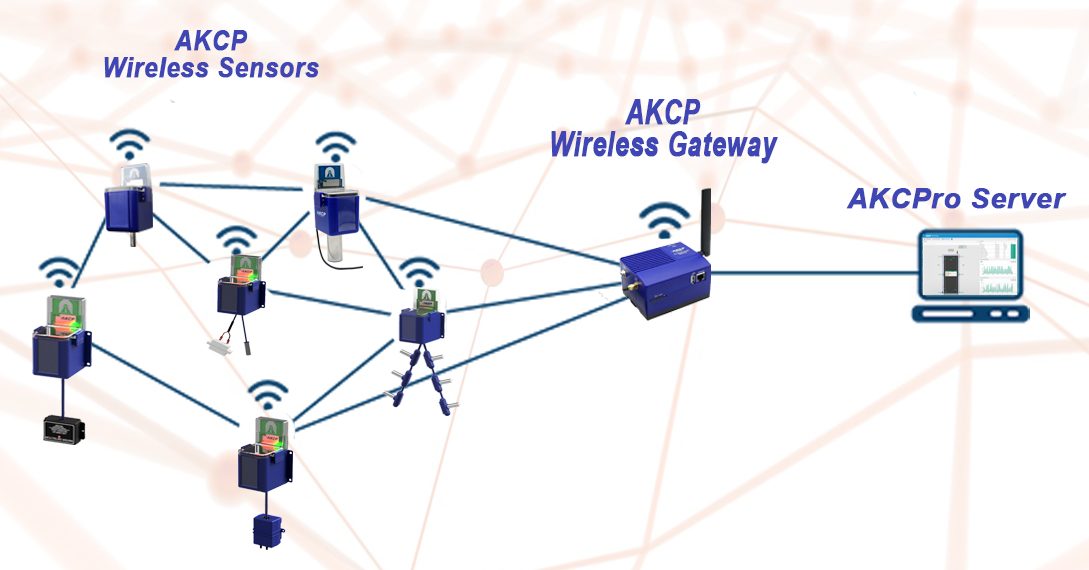
AKCP Wireless Sensor Network
A reliable monitoring system is all you need to be prepared.
Data center infrastructure management (DCIM) software allows operators to optimize their facilities. It allows operators to run smooth operations and improve facility infrastructure. DCIM software connects all data from facilities across organizational domains to optimize your facility. With the use of monitoring solutions, you can always track your system’s performance. It allows you to prepare for disasters before it hits. Hence, you can always secure your backup systems and limit downtime.
- AKCP Sensors
With AKCPro Server installed, dedicated rack maps displaying Cabinet Analysis Sensor data can be configured. This will give you a visual representation of each rack in your data center. Containment views can also be configured. This will give you a sectional view of your racks and containment aisles. This configuration of sensors monitors the air intake and exhaust temperatures of your cabinet. As well as the temperature differential from the front to the rear. Data center monitoring with cabinet sensors helps identify and remove hotspots. Through identifying areas where the temperature differential between front and rear is too high.
- AKCPro Server
AKCPro Server is a world-class software for Data Center Infrastructure Management. Avoid the complexity and cost of many popular Infrastructure Management software. AKCPro Server distills the essence of what DCIM should be. A simple, easy-to-use application. Configure dashboards to display the data you need. With drill-down mapping takes you from a data center-wide to a cabinet-level view. A dedicated rack map shows smart rack sensors such as thermal maps. RFID Swing Handle lock information in a graphical display. Example of cabinet rack view with cabinet thermal map sensors in AKCP Pro Server.
Conclusion
Today’s article has shown the adverse effects of data center disasters. Preparation and prevention are vital regardless of how unlikely it is to happen. Through the careful steps taken to mitigate the damages caused by these disasters, damages can then be lessened. Irreplaceable and irreparable data would have a lower risk of being permanently corrupted. Not only do these steps ensure that data loss is prevented. But it also ensures that stakeholders that rely on these data centers can keep their businesses functional.
Reference Links:
www.sunbirddcim.com/infographic/data-center-disasters
www.165halsey.com/4-data-center-disaster-recovery-causes-and-solutions/
www.racksolutions.com/news/blog/data-center-disasters-how-to-prepare-for-the-worst
www.sunbirddcim.com/what-dcim
www.akcp.com/blog/data-center-infrastructure-management-dcim-solution/




